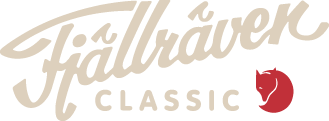-
The fall weather of Jeju varies from chilly morning to warm noon that reaches up to 20℃. It is mostly sunny, but you can expect some rainfall as well. It is always a good idea to check the latest weather report.
-
We've put together a packing list for Classic Korea. But basically a backpack, tent, sleeping bag, stove and trekking clothes for both chilly and sunny weather. Don't forget your compass and first aid kit either.
-
The route is clearly marked on the trail. The trail is clearly sign posted. But you should always have your map and compass handy as a precaution.
-
Unlike Classic Sweden, you're not free to camp anywhere. You can find the camping areas on the map. The first night will be at Donnaeko Wonang, and the second night at Hawon Village.
-
No, it is not allowed under the national park regulations.
-
No, there's no formal time limit for completion of Fjallraven Classic Korea. But participants must arrive to the Checkpoint 1 on the first day until 13:30. Also you must arrive to the campsite Donnaeko Wonang and Hawon Village for camping.
-
Trekking 60km in 3 days is not an easy trip. Especially hiking up to 1700m on the first day could be quite challenging. However, you don't need any special trekking experience to enjoy it. Just make sure you're comfortable carrying a heavy backpack on consecutive days in warm weather.
-
The main thing is to properly walk in your hiking boots and get used to carrying a heavy backpack. Start with easy walks in your local area and build up to over-night trips in more undulating terrain. We recommend that you have at least 200 hiking kilometres under your belt before your hit the Classic Korea trail.
-
We provide you with freeze-dried meals. These meals are designed to be filling and nutritious and meet the requirements of an average adult. But it's nice to have something to snack on along the way. Trail mix of nuts and dried fruit is a great and healthy option for slow-burning energy. There are not many points where you can refill drinking water, so make sure you have enough water before you take off.
-
We recommend you to fill up the bottle before you take off. First day's water supplying points are marked on the map, and you can also use your water purifier bottle which you will receive. On the second day, you can refill water at the checkpoint but the supply might be insufficient due to difficulties of vehicle entry. So we recommend you to fill up before you take off. On the third day, you can refill the bottle at the checkpoint.
-
Help is on hand at every checkpoint. You can always ask fellow trekkers too.
-
Yes, in most locations. But we suggest turning it off and tuning back into nature.
-
Yep, we certainly think so. They help with balance over slippery parts and make going up and down hill easier too. We recommend telescopic poles that you can adjust. You can then shorten them when going uphill and lengthen them when going down. Shock absorbing poles are also a great idea over long distances.
-
We think so, but be aware that weather can fluctuate a lot in the mountains. Please ensure children's safety and be aware that you'll be carrying both your own and your children's camping gear. While this is definitely doable, it does pose extra challenges. It is a journey of 60km over 3 days, and the landscape can be stony and tough. It's not a walk in the park, but active families shouldn't worry too much.
-
Nope, no vaccinations are required for Korea. But remember to pack a tick spray. But it’s good idea pack a tick spray. There are no mosquitoes, but ticks can be in the fall in Jeju.

KR / EN
Classic Korea
